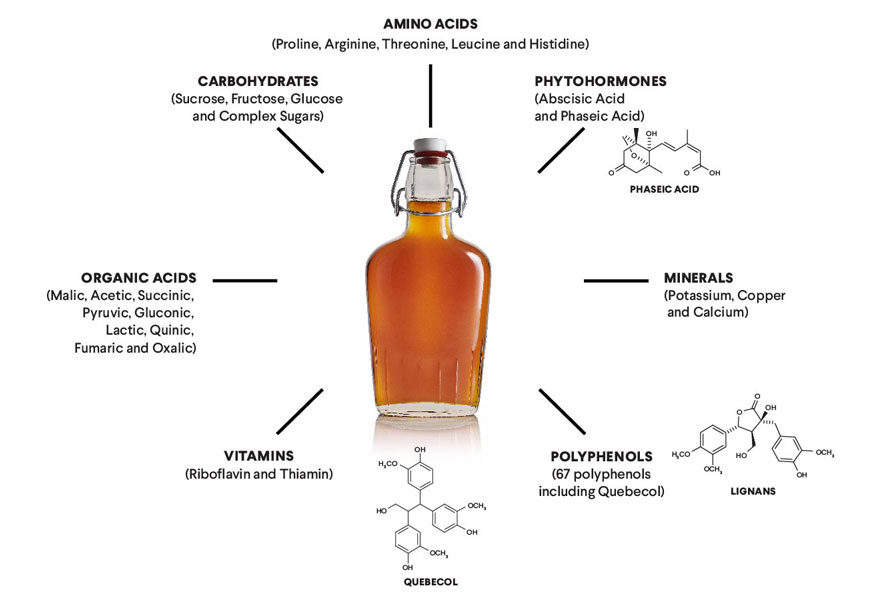Nutrition
Pure Maple Syrup nutrition information
Maple Syrup provides nutrients in a sweet taste
The vitamins and minerals in 100% pure maple syrup from Canada may help to maintain and support a healthy body. One 30 ml (2 Tablespoons) serving of pure maple syrup contains 35% of the Daily Value of Manganese and 15% for Riboflavin.
100% pure maple syrup from Canada is a natural sweetener that is derived directly from the maple tree’s sap that, when consumed in moderation can be part of a healthy diet. With its unique sweet flavor, pure maple syrup can be used in both sweet and savory culinary applications. It can be used as replacement for other sweeteners in a variety of desserts and baked goods, such as pies and cakes.
- Pure maple syrup from Canada contains vitamins and minerals – at approximately 110 calories per serving (2 tablespoons). It is an excellent source of manganese and a good source of riboflavin. Pure maple syrup is also a source of calcium, thiamin, potassium, and copper.
- Scientists have identified more than 67 different plant compounds, or polyphenols, nine of which are unique to pure maple syrup. One of these polyphenols, named Quebecol, naturally forms when the sap is boiled to produce maple syrup.
Maple is Unique
100% pure Maple syrup from Quebec has 67 different polyphenols, nine of which are unique to it. One of these polyphenols, called Quebecol, is naturally produced when sap is boiled to become Maple Syrup.
|
||||||||||||||||||||||||||||||||||||||||||||||||||||||
In 2016, the Food and Drug Administration (FDA) made updates to the Nutrition Facts Label, including listing added sugars to help you know how much you are consuming. In 2019, FDA issued final guidance to provide clarity on the labeling of added sugars for single-ingredient packages or containers of pure honey, maple syrup and other single ingredient sugars and syrups, as these foods are natural sweeteners and don’t have sugar added to them. Single-ingredient products, such as pure maple syrup are not required to declare the number of grams of added sugars in a serving of the product on the Nutrition Facts label, but must still include the percent Daily Value (DV) for added sugars. The FDA also permits the use of the “†” symbol immediately following the added sugars percent DV declaration, which leads to a footnote at the bottom of the Nutrition Facts label explaining the amount of sugar that one serving of the product contributes to the diet.

